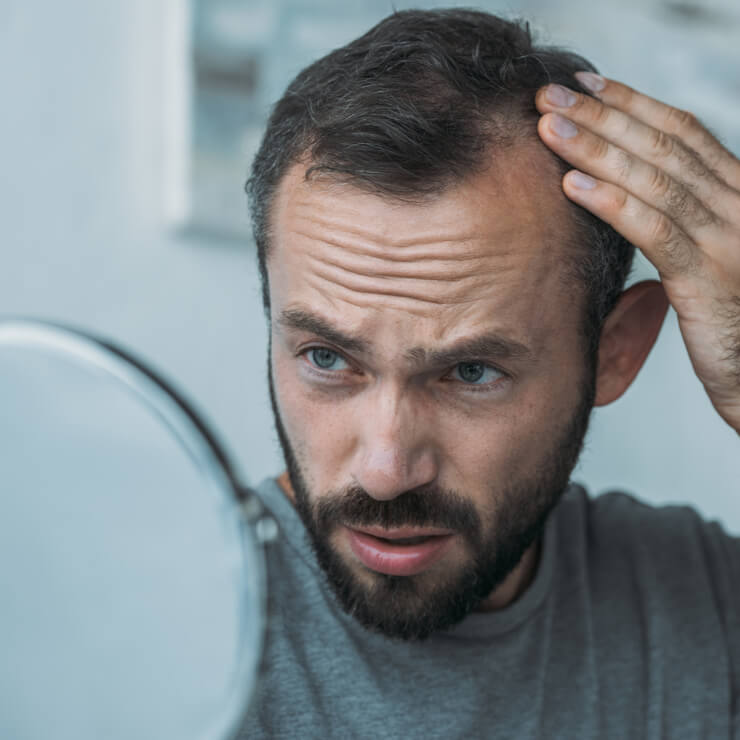
Hair Loss
According to the American Academy of Dermatology, 80 million men and women in the United States have hereditary hair loss. This condition, known medically as alopecia, is caused by a disruption in the hair production cycle. Hair loss can happen anywhere on the body but most commonly affects the scalp.
The hair growth cycle consists of three phases. During the anagen phase, hair actively grows. This phase can last for years. During the catagen phase, growth stops and the hair separates from the follicle. This phase lasts about 10 days. During the telogen phase, the follicle rests for two to four months, and then the hair falls out. The cycle begins again with a new anagen phase.
Generally, humans lose 50 to 100 hairs per day as part of the normal growth cycle. When the balance between hairs growing and hairs shedding is interrupted, or a hair follicle is damaged, hair falls out at a faster rate than it is replaced. This is considered hair loss rather than natural hair shedding. Symptoms include hair falling out in patches, a receding hairline, a widening part or overall thinning.

Other Symptoms and Signs of Hair Loss
Less hair is the most recognizable, and often the only, sign of hair loss. However, some people develop other symptoms and signs, including:
The signs and symptoms developed depend on the type of hair loss.
- Stinging or burning before sudden hair loss
- Intense itching, burning or tenderness in areas of hair loss
- Scaly bald patches, sometimes accompanied by sores or blisters
- Scaly patches of psoriasis
- Redness, swelling and sores that may itch or leak pus
Androgenetic Alopecia: The Most Common Type of Hair Loss
Widely known as male pattern hair loss or female pattern hair loss, androgenetic alopecia is a hereditary condition that affects millions worldwide. In men, it can begin any time after puberty, typically starting around the temples before continuing around the perimeter and the crown of the head.
In women, this type of hair loss is often a natural part of aging and changing hormones. Hair loss in women often occurs as a gradual thinning all over the scalp rather than a receding hairline or full balding.
Treating Hair Loss in Men and Women
The sooner hair loss is identified and treated, the better the outcome of treatment tends to be. A treatment plan for hair loss may include one or more therapies designed to promote hair growth and prevent further hair loss. At the Appearance Care Center, we offer platelet-rich plasma (PRP) treatments for hair restoration, a minimally-invasive and no-downtime procedure that can achieve noticeable increases in hair size (diameter) and new hair growth.
